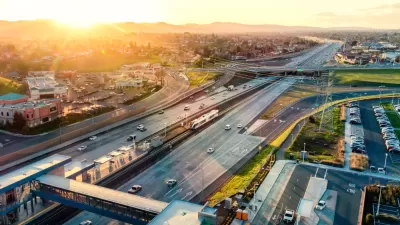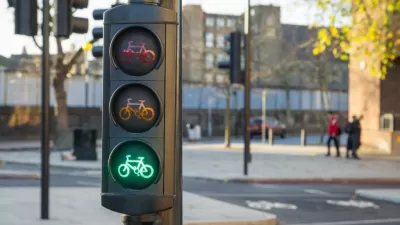My career is based, to a large degree, on my master’s thesis, which was a comprehensive evaluation of the full costs of various forms of transport. This provides a framework for determining optimal pricing, calculating the benefits of mode shifting and demand management strategies, and for comprehensive analysis of policy and planning decisions.
My career is based, to a large degree, on my master's thesis, which was a comprehensive evaluation of the full costs of various forms of transport. This provides a framework for determining optimal pricing, calculating the benefits of mode shifting and demand management strategies, and for comprehensive analysis of policy and planning decisions. In the fifteen years since this thesis was completed I expanded and updated it as new information becomes available, in a report called Transportation Cost and Benefit Analysis, available free on the Victoria Transport Policy Institute website.
This is not entirely unique; some previous studies tried to define and quantify various transportation costs (as summarized in Chapter 2 of my report), but my framework is the most comprehensive because it include categories of social and economic impacts that most economists dismiss as intangibles, such as the external costs of petroleum consumption, the value of transport system diversity (and therefore imporved mobility options for non-drivers), and the costs of land use sprawl. As a result, my work is sometimes criticized for including "excessive" costs.
Critics sometimes argue that analysis of costs ignores the significant benefits provided by transportation, but they are wrong. Yes, transport provides significant benefits (as discussed in Chapter 7 of my report), but these benefits are generally quantified based on cost reductions. For example, roadway improvement benefits are generally measured based on reductions in travel time and vehicle operating costs. Measuring costs is therefore the starting point for measuring benefits.
In recent years some often-overlooked cost categories have started to receive increasing recognition by other transportation professionals, under the concepts of sustainability and livability. For example, the USDOT has joined with the departments of Housing and Urban Development (HUD) and the Environmental Protection Agency (EPA) to support a Livability Initiative. This means that transport policy and planning decisions should incorporate the following objectives:
- Improve transportation options (i.e., help create more diversified, less automobile-dependent transport systems)
- Expand access to affordable-accessible housing.
- Enhance economic competitiveness- improve workers' access to jobs, education and services, and businesses' access to markets.
- Support community revitalization and rural landscape protection.
- Improve cooperation among federal, state, and local governments to improve transport planning and investment practices.
- Value the unique qualities of all communities.
Most transportation professionals are unprepared to deal with these objectives. Conventional transport project evaluation models only consider a small set of impacts: travel time savings, vehicle operating cost savings, and sometimes reductions in accident and emission rates per vehicle-mile. Other economic, social and environmental impacts tend to be ignored and undervalued, including the incremental costs that result from roadway expansions and fuel efficiency standards that induce additional vehicle travel. More comprehensive analysis is needed to incorporate sustainabilty and livability objectives into transport planning.

Conventional transport project evaluation generally considers roadway costs, travel time, vehicle operating costs, and some accident and air pollution costs. Other impacts are often overlooked.
Two weeks ago the US Department of Transportation, Benefit/Cost Analysis for Transportation Infrastructure: A Practitioners Workshop, at which I presented information on practical ways to incorporate livability objectives into transport decision-making. Similarly, last week I gave a presentation on methods for evaluating sustainable transport policies and investments at a major Asia Development Bank conference, Changing Course: Pathways to Sustainable Transport, and next week I'll be presenting similar information at a Transportation Research Board Energy and Environment Conference in Raleigh, North Carolina, which is timely since the theme for the 2011 Transportation Research Board Annual Meeting is Transportation, Livability, and Economic Development in a Changing World. These and many other examples indicate growing interest in sustainable transport and livable community planning. Fortunately, methods do exist for evaluating many of these objectives (transport diversity, equity, affordability, land use impacts, health impacts, affordable-accessible housing, etc.) but they are not widely known by practitioners.
The next century will require new approaches to transport planning in order to respond to changing consumer demands; it will require planning that considers a broader set of objectives, impacts and options. Planners interested in these issues will find plenty of opportunities for research and policy innovations which respond to demands for more sustainable transport systems and more livable communities.

Alabama: Trump Terminates Settlements for Black Communities Harmed By Raw Sewage
Trump deemed the landmark civil rights agreement “illegal DEI and environmental justice policy.”

Planetizen Federal Action Tracker
A weekly monitor of how Trump’s orders and actions are impacting planners and planning in America.

How Atlanta Built 7,000 Housing Units in 3 Years
The city’s comprehensive, neighborhood-focused housing strategy focuses on identifying properties and land that can be repurposed for housing and encouraging development in underserved neighborhoods.

In Both Crashes and Crime, Public Transportation is Far Safer than Driving
Contrary to popular assumptions, public transportation has far lower crash and crime rates than automobile travel. For safer communities, improve and encourage transit travel.

Report: Zoning Reforms Should Complement Nashville’s Ambitious Transit Plan
Without reform, restrictive zoning codes will limit the impact of the city’s planned transit expansion and could exclude some of the residents who depend on transit the most.

Judge Orders Release of Frozen IRA, IIJA Funding
The decision is a victory for environmental groups who charged that freezing funds for critical infrastructure and disaster response programs caused “real and irreparable harm” to communities.
Urban Design for Planners 1: Software Tools
This six-course series explores essential urban design concepts using open source software and equips planners with the tools they need to participate fully in the urban design process.
Planning for Universal Design
Learn the tools for implementing Universal Design in planning regulations.
Jessamine County Fiscal Court
Caltrans
Institute for Housing and Urban Development Studies (IHS)
City of Grandview
Harvard GSD Executive Education
Toledo-Lucas County Plan Commissions
Salt Lake City
NYU Wagner Graduate School of Public Service






























